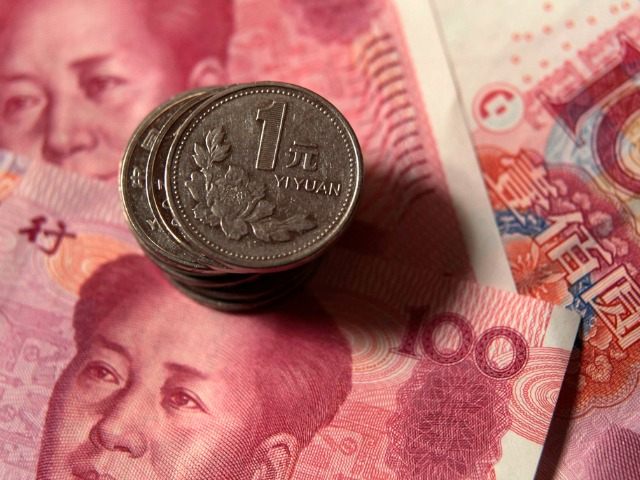From January through March, the Chinese economy suffered its first quarter of negative output growth since 2009, despite official figures showing growth of 7 percent, according to Lombard Street Research.
Buried under “crippling local government and corporate debt”, the Red Dragon’s current debt restructuring plan amounts to “little more than creative financial-engineering.” Lombard believes that China still has the ability address the nation’s debt-bomb, but the fuse is now burning.
By Lombard’s estimates, China’s non-financial debt reached 240 percent of GDP in 2014, while real after-inflation GDP growth averaged about 4.5 percent. Calculating the size of the nation’s bad debt is impossible, because China banks simply roll over loans. In April, the China Central Bank actually cut the amount of cash that banks must hold as reserves twice in an effort to combat slowing growth.
Lombard Street assumes an extreme scenario that China will have to double its public debt to 105 percent of GDP to bail out its banks. That would create an economy with an amount of (un)sustainable leverage similar to the U.S. and Europe.
When China sought to reform its banks and take them public in 1998 as part of an effort to modernize the financial system, distressed assets were the equivalent of about 20 percent of the combined loan totals for China’s “Big Four” banks, or 18 percent of China’s entire gross domestic product, according to a report by the 2003 Bank for International Settlements.
In 1999, China suffered credit downgrades, and it looked like its Ponzi game of massive bank leveraging and selling products under cost would implode. But the economy was rescued in 2001 by the U.S. granting China “Permanent Normal Trade Relations” (i.e. most-favored-nation status). The wildly unbalanced trade deal caused a spectacular economic boom in China, with real growth rates averaging 14 percent per year through 2007. China’s expansion came at the loss of 6 million U.S. manufacturing jobs over the period.
Japan’s debt-fueled hyper-growth phase lasted for 32 years, from 1967 to 1997. China’s debt-fueled hyper-growth decade after 1998 managed to accomplish the debt build-up in 10 years that it took Japan 25 years to accumulate, according to Lombard.
When the sub-prime real estate boom ended in the U.S. and the American consumer stopped spending during the Great Financial Crisis, Chinese growth collapsed from 22 percent in 2007 to negative 4 percent in 2009. Facing a return of the 1999 crisis, Communist China managed to engineer a gigantic monetary expansion that was twice as big and implemented twice as fast as the U.S. stimulus by ordering state-owned banks to lend without regard to risk or profits.
Growth spiked up to over 20 percent in 2010, but with growth going negative according to private calculations, Beijing has discovered that “just throwing money at its over-invested economy spawned real estate speculation, an explosion of debt and inflation rather than real growth,” Lombard concludes.
Japan’s debt bubble was built up as the nation was shifting up the value-added chain to produce high-end exportable manufactured products. China, as the most populous nation in the world, has done very little to build a consumer led domestic economy that can financially support a shift in manufacturing up the value-added chain.
Many analysts have suggested that China should follow the U.S. and Europe and engage in Quantitative Easing. But QE’s goal, to lower borrowing costs for most businesses, is an irrelevant concept in China. The central government tells companies what they will produce and at what prices, and has state-owned-banks lend money without regard to being able to collect on their loans.
China corporate debt since 2007 has risen by 50 percent, to about 140 percent of GDP, but corporate bank deposits have fallen from 90 percent, to 60 percent of GDP. Despite having access to huge amounts of cash, Chinese corporateworking capital is evaporating at an alarming rate. That indicates to Lombard that banks are not making new cash loans, but rather are just rolling over defaulted debt and interest payments.
Lombard Street believes that China still has the financial capability to undertake a massive debt restructure to make its economy competitive again. But that would take the guts to handle the political turmoil from tens of millions of workers being fired as uncompetitive state-owned-enterprises are bankrupted and liquidated.
China built up debt much faster than Japan, which has been in a 20-year recession since its debt-fueled grow phase ended. Lombard Street Research believes that China could take action and defuse its massive debt-bomb, but time is running out.

COMMENTS
Please let us know if you're having issues with commenting.